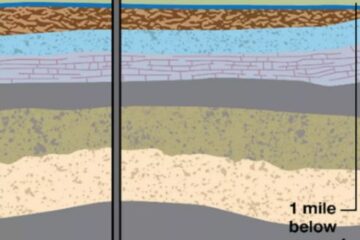California Drying: Households, industries and farmers wrestle over water
What to do when a resource is scarce? Jerry Brown takes command and issues conservation orders. He could do much more with free-market pricing of water.
Source of this article: Barron’s, April 13, 2015
CALIFORNIA IS HAVING ANOTHER BAD drought, now in its fourth year. To save his people from themselves, Gov. Jerry Brown has decreed mandatory water conservation in every city, town, and suburb of the state, and the state legislature has proposed borrowing $7.5 billion to build more water-storage projects.
Standing at a snowless ski area in the Sierra Nevada mountains near Lake Tahoe, Brown confessed that his previous water-conservation measures had been too little, too late, too voluntary, and too vulnerable to corruption. Now the state will get tough, he vowed. He decreed a 25% cut in household water consumption.
“People should realize we are in a new era,” Brown said. “The idea of your nice little green grass that gets water every day, that’s going to be a thing of the past.”
Unfortunately, lawns (and swimming pools and dishwashers and glasses of water served at restaurants) are not the problem.
California certainly does have a water problem: Most of the state’s people and farms depend on water from melting snow on the high Sierras, water impounded behind dams that were built during a century of development.
Because of the drought, most of the reservoirs are nearly empty. So Californians are pumping more ground water from wells, drawing on resources nature stored up over decades. The pumping from aquifers is proceeding at record rates that geologists say are unsustainable.
Neither the reservoirs nor the aquifers will be refilled soon. The annual spring survey of Sierra snowpack showed only 5% of the average amount of snow—one to two inches on April 1 when the statewide average is 63 inches. The fourth year of the current drought is also the worst year of the drought. So far.
The governor’s 25% consumption cut makes for good headlines, but not for good conservation. It applies to households, which tap only 20% of the state’s developed water supply. The other 80% of California’s usable water is allocated to agriculture. Still more water isn’t consumed at all: The state reserves it to keep the rivers full enough to support fisheries and wetlands downstream.
Instead of worrying about lawns, Brown should be thinking about alfalfa, rice, cotton, pistachios, almonds, and other thirsty crops. In a good year, California farmers irrigate about eight million acres, most of which were too dry to farm naturally before the state and federal governments built dams and irrigation canals and aqueducts.
With rich soil and lots of sunshine, California was a sparsely settled land of ranches. With abundant water, California leads the nation in farm income, producing $42 billion in revenue in the most recent normal year.
But that’s an insignificant part of California’s $2 trillion GDP. The rest of the country would greatly miss the state’s agricultural products, but the California economy would keep on producing wealth, even if there were no farms at all.
Using 1,000 acre-feet of water (about 325,000 gallons) to grow a grain crop might generate $400,000 in net returns. Using the same amount of water in a high-tech factory could generate $400 million. More importantly, consider the low price of agricultural water: If cotton farmers paid the retail prices charged to households, they would pay $750 for the water needed to grow $150 worth of cotton.
The real problem isn’t lawns or farms and the real solution isn’t to issue conservation orders. The real problem is water made plentiful and cheap by tax-supported investment. Water, like any commodity, should be priced according to demand, not according to politics.
There could be worse to come, according to scientists who reviewed the history of “megadroughts” at the annual convention of the American Association for the Advancement of Science.
Based on growth rings of trees, ocean sediment samples and other measurements that indicate favorable or unfavorable conditions for plant growth, it appears that there were many dry years in the 12th and 13th centuries. Combined, they made up a mega-drought, and some climate models suggest another one could be under way.
Keep calm, California: At the right price for water, determined by supply and demand, the state can survive any drought.
Editorial page editor THOMAS G. DONLAN receives e-mail at tg.donlan@barrons.com.



0 Comments